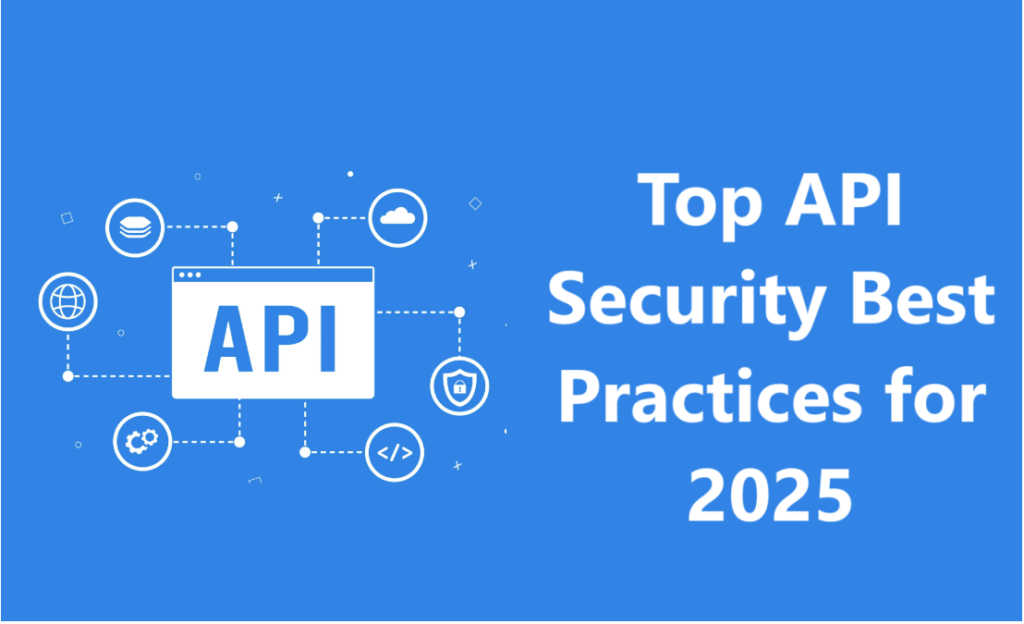Top API Security Best Practices for 2025
APIs (Application Programming Interfaces) are the backbone of modern software, enabling seamless communication between applications, services, and systems.
However, their widespread use makes them prime targets for cyberattacks. In 2024, API-related breaches surged by 35%, underscoring the urgent need for robust security measures.
This guide explores API security best practices to help you fortify your digital infrastructure against evolving threats.

Why API Security Matters
APIs handle sensitive data, including user credentials, payment details, and proprietary business information. A single vulnerability can lead to:
- Data breaches
- Unauthorized access
- Financial losses
- Reputational damage
- Regulatory penalties (e.g., GDPR, CCPA)
Adopting proactive security strategies is non-negotiable for developers, DevOps teams, and organizations.
10 API Security Best Practices to Implement Now
1. Authentication & Authorization: Verify Identity and Permissions
Authentication confirms user identity, while authorization determines access levels.
- Use OAuth 2.0/OpenID Connect (OIDC): These industry standards enable secure token-based authentication. OAuth 2.0 delegates access without sharing credentials, while OIDC adds an identity layer.
- Leverage API Keys Sparingly: API keys are simple but lack granular security. Use them only for low-risk internal APIs.
- Implement Role-Based Access Control (RBAC): Restrict endpoints based on user roles (e.g., admin, guest).
- Use Msal library given by microsoft sso.
Pro Tip: Always validate JSON Web Tokens (JWT) signatures to prevent tampering.
2. Encrypt Data in Transit and at Rest
Encryption ensures data remains unreadable to unauthorized parties.
- Enforce HTTPS/TLS 1.3: Encrypt API traffic using TLS 1.3 to prevent man-in-the-middle (MITM) attacks.
- Encrypt Sensitive Data at Rest: Use AES-256 for databases and storage systems.
- Avoid Mixed Content: Block HTTP requests if your API runs on HTTPS.
3. Validate and Sanitize Inputs
APIs often process user inputs, which can be exploited for injection attacks (e.g., SQLi, XSS).
- Schema Validation: Enforce strict schemas (JSON Schema, OpenAPI) to check data types, formats, and lengths.
- Sanitize Inputs: Remove special characters or escape inputs to neutralize malicious payloads.
- Use Parameterized Queries: Prevent SQL injection by avoiding raw queries.
4. Apply Rate Limiting and Throttling
APIs are vulnerable to DDoS attacks and brute-force attempts.
- Rate Limiting: Restrict requests per user/IP (e.g., 100 requests/minute).
- Throttling: Gradually slow down responses during traffic spikes.
- Track Metrics: Monitor API usage patterns to adjust limits dynamically.
Tools: Use API gateways like Kong, AWS API Gateway, or NGINX.
5. Adopt Secure Error Handling
Generic error messages can leak sensitive data.
- Avoid Detailed Errors: Never expose stack traces, server details, or database info.
- Use Standard HTTP Status Codes: Return codes like
401 Unauthorizedor403 Forbiddenwithout extra context. - Log Errors Internally: Record debug details in secure logs for analysis.
6. Secure API Endpoints with Firewalls
Web Application Firewalls (WAFs) filter malicious traffic before it reaches your API.
- Deploy Cloud-Based WAFs: Solutions like Cloudflare or AWS WAF block SQLi, XSS, and bot attacks.
- Whitelist Trusted IPs: Restrict access to known IP ranges for internal APIs.
7. Conduct Regular Security Audits and Testing
Proactive testing identifies vulnerabilities before attackers do.
- Penetration Testing: Simulate attacks to uncover flaws.
- Static/Dynamic Analysis (SAST/DAST): Scan code for vulnerabilities during development.
- Check OWASP API Top 10: Stay updated on risks like broken authentication or excessive data exposure.
8. Version Your APIs
API updates can introduce security gaps. Versioning ensures backward compatibility.
- Use URL Versioning: Example:
/api/v2/resource. - Deprecate Old Versions: Phase out insecure versions with proper client notifications.
9. Monitor and Log API Activity
Real-time monitoring detects anomalies and breaches.
- Track Metrics: Monitor latency, error rates, and traffic sources.
- Centralized Logging: Use tools like ELK Stack or Splunk to aggregate logs.
- Set Alerts: Notify teams of suspicious activities (e.g., repeated failed logins).
10. Ensure Third-Party Security
Third-party APIs can introduce risks.
- Vet Providers: Check their security certifications (SOC 2, ISO 27001).
- Review SLAs: Ensure they comply with data protection laws.
- Limit Permissions: Grant third parties minimal access via scopes.
Emerging Trends in API Security
- Zero Trust Architecture: Assume no user or device is trusted by default.
- AI-Driven Threat Detection: Machine learning identifies abnormal patterns.
- GraphQL Security: Address risks unique to GraphQL, like query depth attacks.
Conclusion: Build a Culture of API Security
API security is a continuous process requiring collaboration across teams. By implementing these best practices—strong authentication, encryption, input validation, and monitoring—you can mitigate risks and build trust with users. Stay ahead of threats by adopting emerging technologies and conducting regular audits.
Final Tip: Educate your team on API security fundamentals and foster a proactive security mindset.





